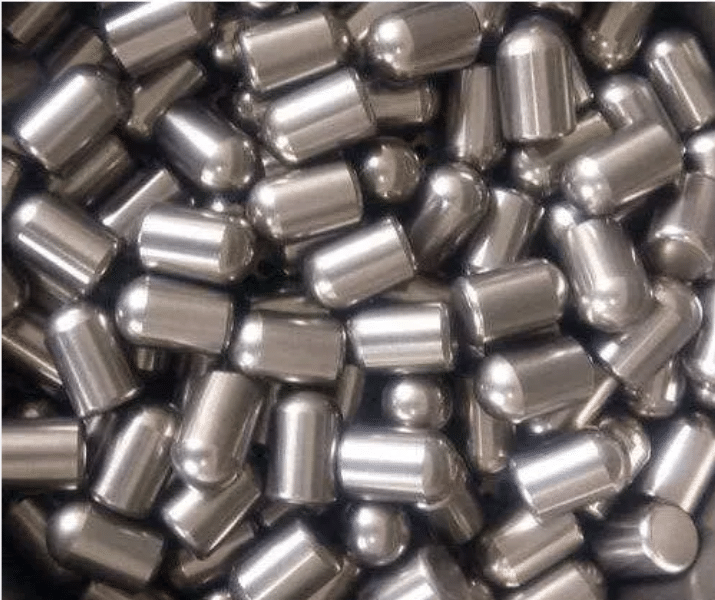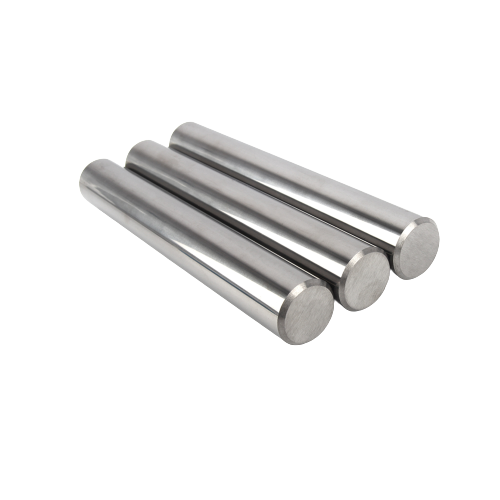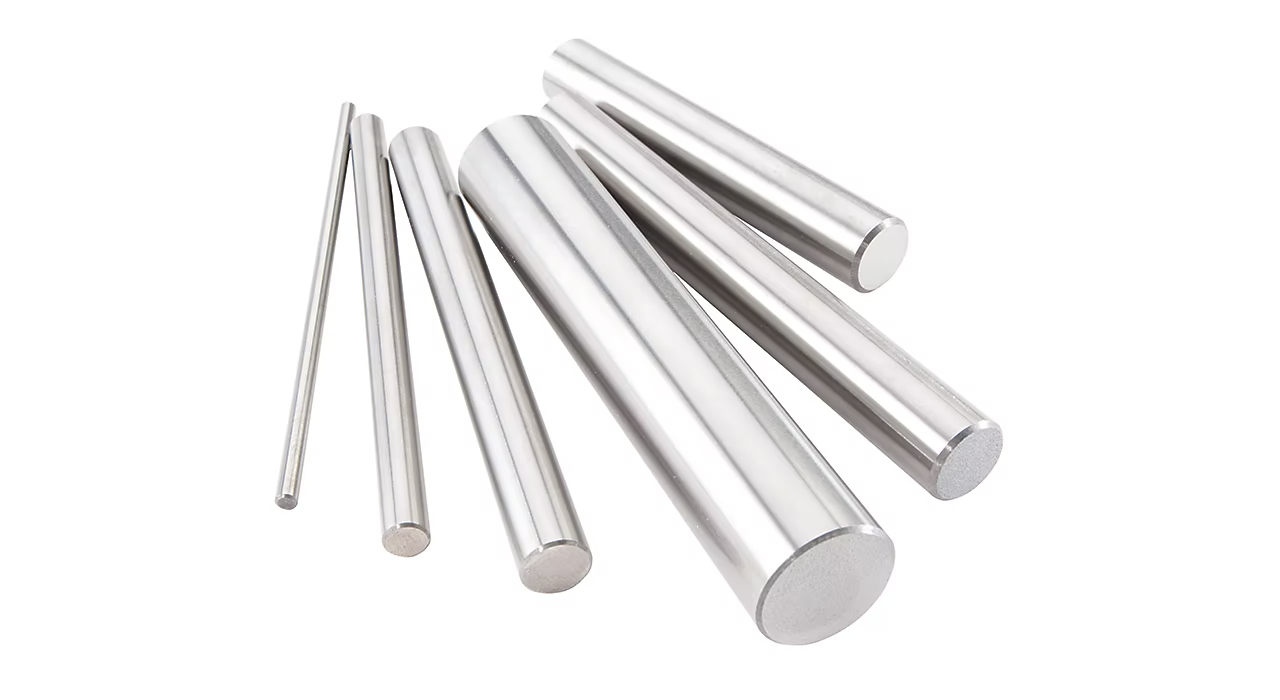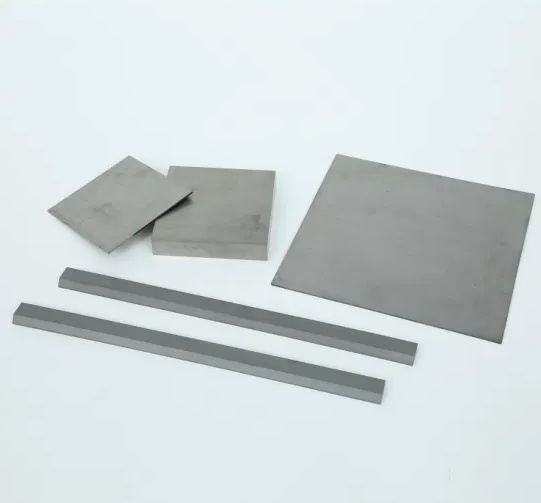Dans le monde de la fabrication industrielle et de l'usinage, la précision et la durabilité sont primordiales. L'un des composants qui illustre ces qualités est l'outil d'usinage de précision qu'est le bouton en métal durs. Ces boutons sont essentiels dans toute une série d'applications, de l'exploitation minière et du forage aux machines et à l'outillage. Ce blog explore le monde fascinant des boutons en métal dur usinés avec précision, en mettant l'accent sur leur conception, leurs applications, leurs avantages et les raisons pour lesquelles ils constituent un élément essentiel de l'industrie moderne.
Comprendre les boutons en métal dur usinés avec précision
Qu'est-ce qu'un bouton en métal dur ?
Les boutons en métal dur, souvent appelés boutons en carbure, sont de petites pièces robustes fabriquées en carbure de tungstène ou en matériaux durs similaires. Ces boutons sont réputés pour leur dureté exceptionnelle, leur résistance à l'usure et leur capacité à conserver leur tranchant dans des conditions extrêmes.

L'usinage de précision : Pourquoi c'est important
L'usinage de précision consiste à façonner et à finir méticuleusement des boutons en métal dur selon des spécifications précises. Ce processus garantit que les boutons répondent à des normes de qualité strictes et qu'ils fonctionnent de manière fiable dans les applications auxquelles ils sont destinés.
Caractéristiques principales des boutons en métal dur usinés avec précision
- Dureté élevée: Assure la durabilité et la résistance à la déformation.
- Résistance à l'usure: Prolonge la durée de vie du bouton.
- Précision dimensionnelle: Garantit un ajustement parfait et des performances optimales dans les assemblages.
- Finition de la surface: Réduit les frottements et améliore les performances.
Applications des boutons en métal dur usinés avec précision
Exploitation minière et forage
Dans les opérations minières et de forage, les boutons en métal dur sont utilisés dans les trépans et les outils de coupe. Leur grande dureté et leur résistance à l'usure leur permettent de couper efficacement la roche, le minerai et d'autres matériaux durs.
Machines et outils
Les boutons en métal dur usinés avec précision font partie intégrante de diverses machines et applications d'outillage. Ils sont utilisés dans des composants qui exigent une grande précision et une grande durabilité, tels que les roulements, les vannes et les outils de coupe.
Aérospatiale et automobile
Dans les secteurs de l'aérospatiale et de l'automobile, ces boutons sont utilisés dans des composants qui doivent résister à des conditions extrêmes et à une forte usure, tels que les aubes de turbines et les pièces de moteurs.
Pétrole et gaz
Dans le secteur du pétrole et du gaz, les boutons en métal dur sont utilisés dans les équipements de forage et les vannes qui fonctionnent sous haute pression et dans des conditions abrasives.
Avantages des boutons en métal dur usinés avec précision
Le choix de boutons en métal dur usinés avec précision offre plusieurs avantages significatifs :
- Amélioration des performances: La dureté élevée et la résistance à l'usure du bouton en métal dur garantissent des performances supérieures dans les applications exigeantes.
- Longévité: Ces boutons ont une durée de vie plus longue, ce qui réduit la nécessité de les remplacer fréquemment.
- Rapport coût-efficacité: Malgré leur coût initial plus élevé, la durabilité et la longévité des boutons en métal dur en font un choix plus rentable à long terme.
- Fiabilité: L'usinage de précision garantit que chaque bouton est conforme aux spécifications exactes, ce qui permet d'obtenir des performances constantes et fiables.
Comparaison des performances
Pour mieux comprendre les avantages des boutons en métal dur usinés avec précision, comparons-les aux boutons en acier standard :
| Attribut | Boutons en métal dur | Boutons en acier standard |
|---|---|---|
| Dureté | Très élevé | Modéré |
| Résistance à l'usure | Excellent | Bon |
| Durée de vie opérationnelle | Longues | Court |
| Coût | Coût initial plus élevé | Coût initial moins élevé |
| Fréquence d'entretien | Faible | Haut |
| Précision dimensionnelle | Haut | Variable |
Facteurs clés dans le choix des boutons en métal dur usinés avec précision
Lorsque vous choisissez un bouton en métal dur pour votre application, tenez compte des facteurs suivants pour garantir des performances optimales :
- Matériau: Choisissez une composition de métal dur qui correspond aux exigences de votre application.
- Taille et forme: Veiller à ce que les boutons soient usinés aux dimensions et à la forme précises requises.
- Revêtement: Déterminer si un revêtement est nécessaire pour améliorer les performances, par exemple en réduisant le frottement ou en augmentant la résistance à l'usure.
- Environnement de l'application: Tenir compte des conditions de fonctionnement, telles que la température, la pression et l'usure par abrasion.
Liste de contrôle pour la sélection
Voici une liste de contrôle rapide pour vous aider à choisir le bon bouton en métal dur usiné avec précision :
- Compatibilité des matériaux: Vérifiez que le matériau du bouton est adapté à l'application.
- Précision dimensionnelle: S'assurer que le bouton est conforme aux spécifications de taille et de forme requises.
- Exigences en matière de revêtement: Déterminer si un revêtement est nécessaire pour améliorer les performances.
- Conditions environnementales: Tenez compte des conditions d'utilisation auxquelles le bouton sera exposé.
Techniques de fabrication innovantes pour les boutons en métal dur
Les progrès des techniques de fabrication ont considérablement amélioré la qualité et les performances des boutons en métal dur usinés avec précision. Voici quelques-unes de ces techniques :
- Métallurgie des poudres: Ce processus consiste à presser et à fritter des matériaux en poudre pour créer un bouton de métal dur dense et uniforme.
- Usinage CNC: L'usinage à commande numérique par ordinateur (CNC) permet d'obtenir une précision et une répétabilité élevées dans la fabrication de boutons en métal dur.
- Technologies de revêtement: Les revêtements avancés, tels que le PVD (Physical Vapor Deposition) et le CVD (Chemical Vapor Deposition), améliorent les performances et la longévité des boutons en métal dur.
Avantages des techniques de fabrication avancées
- Une plus grande précision: Veille à ce que chaque bouton soit produit selon des spécifications exactes.
- Amélioration des performances: Améliore la dureté, la résistance à l'usure et les performances globales des boutons.
- Cohérence: Garantit une qualité uniforme pour les grandes séries de production.
Histoires de réussite dans le monde réel
Étude de cas n° 1 : industrie minière
Une société minière était confrontée à des remplacements fréquents d'outils en raison de l'usure et de la casse. En optant pour un bouton en métal dur usiné avec précision, elle a fait l'expérience :
- Augmentation de la durée de vie des outils: Les outils ont duré beaucoup plus longtemps, ce qui a permis de réduire les temps d'arrêt.
- Efficacité accrue: L'amélioration des performances de coupe a permis d'accélérer les vitesses de perçage.
- Économies de coûts: Réduction de la fréquence de remplacement des outils, ce qui permet de réaliser des économies.
Étude de cas n° 2 : Fabrication automobile
Un constructeur automobile a utilisé un bouton en métal dur usiné avec précision dans les composants de son moteur. Les résultats sont les suivants :
- Durabilité améliorée: Les composants ont mieux résisté aux températures et aux pressions élevées.
- Une qualité constante: L'usinage de précision a permis d'obtenir des performances uniformes pour tous les composants.
- Réduction de la maintenance: Les composants plus durables nécessitent une maintenance moins fréquente.
Maximiser les performances des boutons en métal dur usinés avec précision
Pour tirer le meilleur parti de votre bouton en métal dur usiné avec précision, suivez ces conseils d'experts :
- Inspection régulière: Inspectez fréquemment les boutons pour vérifier qu'ils ne présentent pas de signes d'usure ou de détérioration.
- Utilisation correcte: Utilisez les boutons dans les limites des paramètres opérationnels spécifiés afin d'éviter une usure prématurée.
- Maintenance: Nettoyez et rangez les boutons correctement afin d'éviter toute contamination et tout dommage.
Liste de contrôle pour l'entretien
Voici une liste de contrôle rapide pour l'entretien de votre bouton en métal dur usiné avec précision :
- Inspecter régulièrement: Vérifier l'absence d'usure ou de dommages après chaque utilisation.
- Nettoyer à fond: Enlever tout débris ou résidu pour maintenir la performance.
- Stocker correctement: Conserver les boutons dans un environnement propre et sec pour éviter la corrosion.
Foire aux questions (FAQ)
1. Qu'est-ce qui fait que l'usinage de précision boutons en métal dur différent des boutons standard en métal dur ?
Les boutons en métal dur usinés avec précision sont soumis à des processus de façonnage et de finition rigoureux pour répondre à des spécifications exactes. Cette précision garantit des performances et une fiabilité accrues, ainsi qu'une durée de vie plus longue par rapport aux boutons en métal dur standard, qui peuvent ne pas être fabriqués avec autant de minutie.
2. Les boutons en métal dur peuvent-ils être utilisés dans des environnements à haute température ?
Oui, les boutons en métal dur sont conçus pour résister à des conditions extrêmes, notamment à des températures élevées. Ils conviennent donc à une utilisation dans des secteurs exigeants tels que l'aérospatiale et l'automobile, où les composants sont exposés à une chaleur intense.
3. Comment choisir le bon bouton en métal dur pour mon application ?
Lors de la sélection d'un bouton en métal dur, il convient de tenir compte de la composition du matériau, de la taille, de la forme, des besoins en revêtement et des conditions de fonctionnement spécifiques de votre application. La compatibilité avec ces facteurs vous aidera à choisir le bouton le mieux adapté.
4. Les boutons en métal dur doivent-ils être entretenus ?
Un entretien régulier peut prolonger la durée de vie d'un bouton en métal dur. Il s'agit notamment d'inspections fréquentes pour détecter l'usure ou les dommages, d'un nettoyage approfondi pour éliminer les débris et d'un stockage adéquat dans un environnement propre et sec pour éviter la corrosion.
5. Quels progrès dans les techniques de fabrication ont permis d'améliorer les boutons en métal dur ?
Des innovations telles que la métallurgie des poudres, l'usinage CNC et les technologies de revêtement avancées ont considérablement amélioré la précision, les performances et la cohérence des boutons en métal dur. Ces techniques garantissent que chaque bouton répond à des spécifications exactes et fonctionne de manière fiable dans des applications exigeantes.
Conclusion
Les boutons en métal dur usinés avec précision sont des composants indispensables dans une grande variété d'applications industrielles, offrant des performances et une longévité inégalées. Leur grande dureté, leur résistance à l'usure et leur précision les rendent idéaux pour les environnements exigeants tels que l'exploitation minière, le forage, les machines, l'aérospatiale, l'automobile et les industries pétrolières et gazières.




